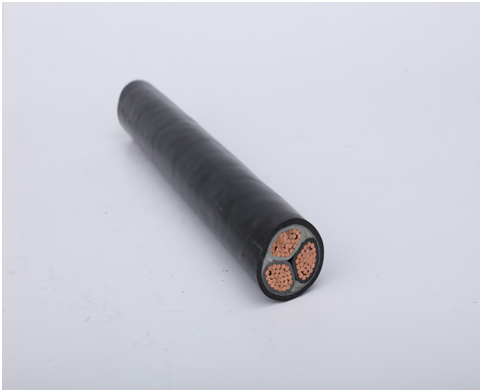
The purpose of each type of wire is different, because it has the characteristics that other wires do not have, so we should first understand the characteristics of low-smoke halogen-free flame-retardant wires before purchasing low-smoke halogen-free flame-retardant wires.
1. Characteristics of low-smoke halogen-free flame-retardant wires--the tensile strength is larger than that of ordinary PVC wires: the tensile strength of general PVC wires is greater than 1.05Kgf/mm2, and the tensile strength of low-smoke halogen-free wires is greater than 1.2Kgf/mm2;
2. Characteristics of low-smoke halogen-free flame-retardant wires - good weather resistance (-30 ° C ~ 105 ° C); good softness (hardness 80-90);
3. Characteristics of low-smoke halogen-free flame-retardant wires - non-shifting (because there is no plasticizer added in the formulation of this product, there will be no migration); no toxic black smoke will be produced when burning (a small amount of white will be produced) Smoke); has a high volume resistivity: PVC wire is generally 1012 ~ 1015 Ω / cm3, low-smoke halogen-free wire is greater than 1016 Ω / cm3; (7) has good high pressure characteristics: PVC wire is generally resistant to 10KV or more, and low Smoke-free halogen wire up to 15KV or more; (8) has good elasticity and viscosity.

1. The product name identification method for the identification method of low-smoke halogen-free flame-retardant wires. Wire--low-smoke halogen-free flame-retardant polyethylene insulated wire and cable; cable--low-smoke halogen-free flame-retardant polyethylene insulated low-smoke halogen-free flame-retardant polyethylene sheathed power cable. Imitations generally have a different name, such as polyethylene insulated low-smoke halogen-free sheathed flame-retardant power cables.
2. The method of identifying the low-smoke halogen-free flame-retardant wire by the method of burning the skin. There should be no obvious depressions in the insulation layer with an electric iron. If there is a large depression, the material or process used in the insulation layer is defective.
Or use a lighter to grill, under normal circumstances should be not easy to ignite, the insulation of the cable is still relatively complete after a long time of burning, no smoke and irritating odor, while the diameter has increased. If it is easy to ignite, it can be determined that the insulation of the cable is not using a low-smoke, halogen-free material (most likely polyethylene or cross-linked polyethylene).
If there is a large amount of smoke, the insulation layer is made of halogen-containing material. If the insulation surface falls off seriously after a long time of burning, and the diameter does not increase significantly, it means that the appropriate irradiation crosslinking process is not performed.
3. Hot water immersion method for identifying low-smoke halogen-free flame-retardant wires. The core or cable is immersed in hot water at 90 ° C. Under normal conditions, the insulation resistance does not drop rapidly and remains above 0.1 MΩ/Km.
If the insulation resistance drops rapidly or even lower than 0.009 MΩ/Km, it indicates that it has not been treated by a suitable irradiation crosslinking process. (Polyethylene or XLPE insulation materials are not suitable for this method and can be identified by the method described in the second paragraph above).